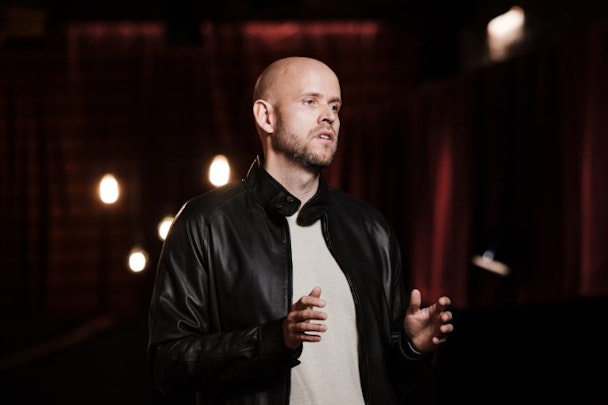Spotify’s head of international ad sales says platform is looking at India
Kristiana Carlet only joined Spotify as head of international ad sales last year but she’s already turning her attention to new territories and tech to grow its advertising business.

Daniek Ek, Spotify’s founder. The platform plans to scale up its business in south and east Asia / Spotify
Spotify’s advertising business has been secondary to its success for years. In territories like the US and the EU, the business was built off the back of subscriptions, while the advertising business came later. Its revenue still skews heavily towards subscription revenues, accounting for 80% of its total revenue.
But because subscribers are still a large minority among its user base – around 40% of users pay for the service – there’s a lot of headroom for growth in non-subscription revenue. Carlet believes that India and Japan are key markets within which to exploit that opportunity.
The audio platform’s relative nascency in India is now allowing it to experiment in a way that would not have been possible in other markets. The service only launched in the country in 2019, and as its head of international advertising sales Kristiana Carlet explains, that presents it with the ability to build subscriptions and advertising with equal priority.
She said: “Now we have our CEO stating – before I joined, actually – that advertising revenue is going to be 20% of your business, which is huge. And we are still definitely on track to deliver that.
“If I think about India, that journey is so fascinating, because we started four years ago with a small sales team. And then we started seeing that our subscription v free trajectory was different from every other market: they were at par where for the majority of the market subscription, especially in EMEA, is the driver.”
She states that the opportunity for Spotify in India is in building out complementary subscription-and-advertising-based options. To achieve that she explains that Spotify’s advertising sales team in India will soon be five times the size it was when she joined the business in early 2022.
She is also keen to point out that Spotify’s name recognition is opening doors for its sales teams globally. The brand recognition, the scale of its audience (it passed 500 million users earlier this year, with the proportion of its premium subscribers dropping to around 40%) and its first-party data is allowing it to speak to huge brands around partnership opportunities.
Its partnership with Disney Plus in April was born from just such a discussion, Carlet says. She explains that combining Disney’s content with the analytics tools and context of the Spotify player delivers a halo effect for the advertiser. “You have to think about some of the UK campaigns. One specifically was with Disney Plus recently, where we have really shown the best of what we can do with leveraging how our listeners consume our content.
“Plus our client knows about their users and what they like [so] how do we connect the tools through some great creative output that is so engaging for the listeners that they want, not only to click on it but also to come back on it.”
Creative measurement
No matter where the service is investing geographically, Carlet says that marketer and brand priorities remain the same: measurement. She notes that her background is in display advertising, and that digital audio advertising is following the same trajectory from manual insertion of ads, through programmatic and CTAs, to more dynamic and interesting executions.
Advertiser demand for more accurate measurements has been a constant, not just for audio. What is different, Carlet says, is the speed with which the audio ecosystem is developing. She says that while proving ROI is a priority for marketers, the market still needs education about the role of creative and content when reaching listeners.
“It’s fair to say that audio for a lot of our advertisers is very nascent. Even in a market like the UK… that education is ongoing, because [advertisers] learn about standard audio, creative, and now we are going to broadcast. And it’s a very interesting space because it’s a content space. And a lot of our clients think about that space more as if they were thinking about TV, for example, because it's about programming.”
To that end, Spotify’s priority is demonstrating the strength and breadth of its content to marketers. At Cannes, for instance, the platform is investing heavily in bringing some of the biggest names in audio – from bands like Foo Fighters to some of the stars of its suite of podcasts and audiobooks – in front of crowds on the Spotify beach.
Citing the example of a colleague whose voice is used as the basis of the AI-powered DJ within the platform, she notes that the intersection of real-world and in-app experience is powerful for creating the context in which advertisers can speak to Spotify listeners. She is particularly keen to point out the power of such AI tools to aid with discovery and engagement on the platform, which would enhance that context further still.
Spotify is undergoing a period of change, with its priority shifting from subscription-first to a mix of subscriptions and advertising revenue. As Carlet says, however, its core focus is still on the content and creativity that its listeners can experience on the platform – and everything flows from that.

